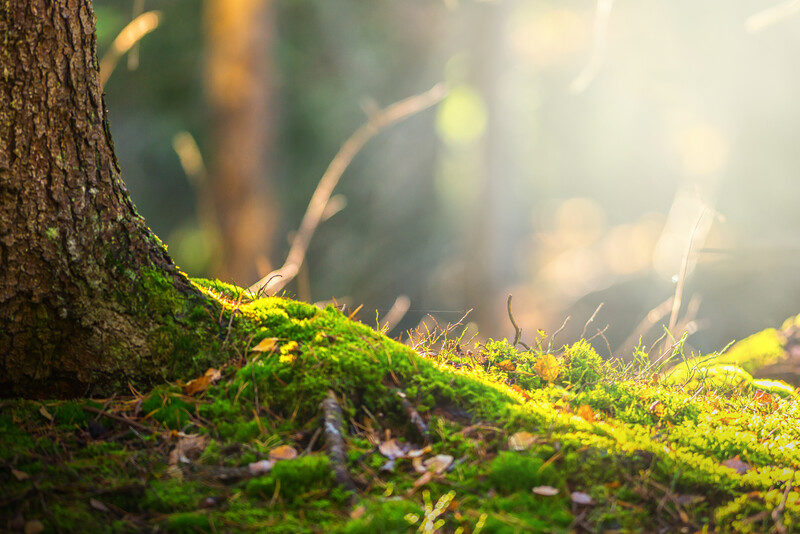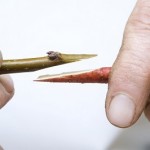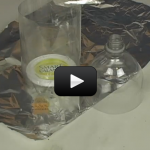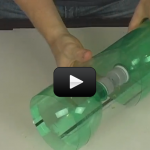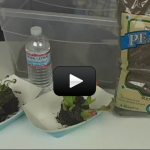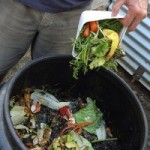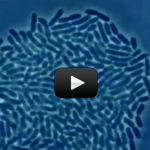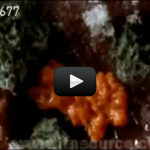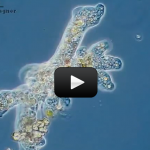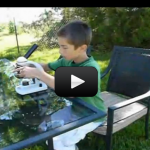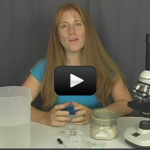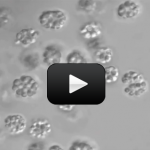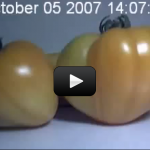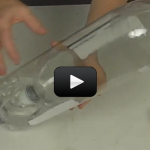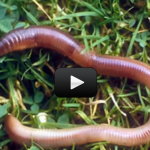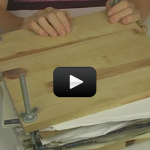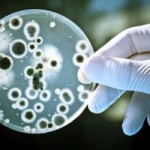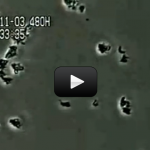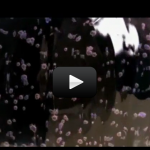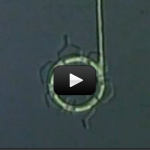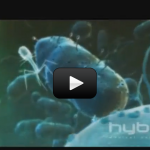Three Ways to Create a Plant
If you’ve ever eaten fruits or vegetables (and let’s hope you have), you have benefited from plants as food. Of course, the plants we eat have been highly modified by growers to produce larger and sweeter fruit, or heartier vegetables. There are three basic ways to create plants with new, more desirable traits: |
Predator-Prey: Who Eats Whom?
The way animals and plants behave is so complicated because it not only depends on climate, water availability, competition for resources, nutrients available, and disease presence but also having the patience and ability to study them close-up. We’re going to build an eco-system where you’ll farm prey stock for the predators so you’ll be able … Continue reading "Predator-Prey: Who Eats Whom?" |
Eco-Column:
What grows in the corner of your windowsill? In the cracks in the sidewalk? Under the front steps? In the gutter at the bottom of the driveway? Specifically, how doe these animals build their homes and how much space do they need? What do they eat? Where do fish get their food? How do ants … Continue reading "Eco-Column:" |
Carnivorous Greenhouse
Plants need light, water, and soil to grow. If you provide those things, you can make your own greenhouse where you can easily observe plants growing. Here’s a simple experiment on how to use the stuff from your recycling bin to make your own garden greenhouse. We’ll first look at how to make a standard, … Continue reading "Carnivorous Greenhouse" |
Turning Compost into Gold
If you have a backyard garden, be sure to give it plenty of sunshine, water, and garbage. Wait… garbage? Yes, you read that right. Garbage like rotting food and coffee grounds, made into compost, can be highly beneficial to garden plants. Why? It all has to do with nitrogen. Plants need nitrogen in order to … Continue reading "Turning Compost into Gold" |
How Bacteria Grow
All living things need a way to get energy. Bacteria get their food and energy in many ways. Some bacteria can make food on their own, while others need other organisms. Some bacteria help other living things as they get energy, others hurt them while they get energy, and still others have no affect on … Continue reading "How Bacteria Grow" |
Real Slime: Orange Bacteria
This type of slime Physarum Polycephalum is called the “many-headed slime”. This slime likes shady, cool, moist areas like you’d find in decaying logs and branches. Slime (or slime mold) is a word used to define protists that use spores to reproduce. (Note: Slime used to be classified as fungi.) Real slime lives on microorganisms … Continue reading "Real Slime: Orange Bacteria" |
Amoeba in Action
If your kitchen is like most kitchens, you probably have cabinets for cups and pots and pans, along with drawers for silverware and cooking utensils. You might also have a drawer you call the “junk drawer.” The things in this drawer aren’t actually “junk.” If they were, you’d throw them away. Instead, things usually get … Continue reading "Amoeba in Action" |
Ideas for Exploring Microscopic Life
Living things are all around us. Sometimes the living things we notice the most are animals, whether its birds chirping in the trees, our pet dogs, or even our fellow human beings. However, most living things are not animals - they include bacteria, archae, fungi, protists, and plants. These organisms are extremely important to learn … Continue reading "Ideas for Exploring Microscopic Life" |
Yeast, Mold, and More!
Fungi and protists, including mold, moss, yeast, and mushrooms, are found all around us. One common group of fungi is mold. Mold, like all fungi, are heterotrophs, which means they rely on other living things for their energy. This is different than an autotroph like a plant, which gets its energy from the sun. Mold … Continue reading "Yeast, Mold, and More!" |
Magnetic Bacteria
Birds, people, plants, and microscopic organisms need to know where they are as well as where they want to be. Birds migrate each year and know which way is south, and plants detect the sun so they can angle their leaves properly. People consult a map or GPS to figure out where they are. Magnetotactic … Continue reading "Magnetic Bacteria" |
How to Ripen a Tomato with a Banana
It drives me crazy it when my store-bought tomatoes go straight from unripe to mush. After talking with local farmers in my area, I discovered a few things that might help you enjoy this fruit without sacrificing taste and time. Grocery store owners know that their products are very perishable. If the tomatoes arrive ripe, … Continue reading "How to Ripen a Tomato with a Banana" |
Terraqua Column: How does water affect land and animals?
How does salt affect plant growth, like when we use salt to de-ice snowy winter roads? How does adding fertilizer to the soil help or hurt the plants? What type of soil best purifies the water? All these questions and more can be answered by building a terrarium-aquarium system to discover how these systems are … Continue reading "Terraqua Column: How does water affect land and animals?" |
Worms!
Here we’re going to discuss the differences between three types of worms; flatworms, roundworms, and segmented worms. The word “worm” is not, in fact, a scientific name. It’s an informal way of classifying animals with long bodies and no appendages (no including snakes). They are bilaterally symmetrical (the right and left sides mirror each other). … Continue reading "Worms!" |
Plant Press
Art and science meet in a plant press. Whether you want to include the interesting flora you find in your scientific journal, or make a beautiful handmade greeting card, a plant press is invaluable. They are very cheap and easy to make, too! |
How to Grow Mushrooms
If you have ever seen mold growing on an old loaf of bread or eaten a mushroom, you have encountered a fungus. Fungi (that’s the plural of fungus) are a group of organisms, or living things, that are all around us. Mold on bread and mushrooms on pizza are both examples of fungi. Fungi have … Continue reading "How to Grow Mushrooms" |
Bacteria in Humans and Dogs
Some organisms, like bacteria, consist of only one cell. Other organisms, like humans, consist of trillions of specialized cells working together. Even if organisms look very different from each other, if you look close enough you’ll see that their cells have much in common. Most cells are so tiny that you can’t see them without … Continue reading "Bacteria in Humans and Dogs" |
Should I brush my teeth?
One place where bacteria can be found is on your teeth. This is why it’s so important to brush well. Don’t believe me? Then this experiment is for you. You’ll need to gather your materials and make sure you have a toothbrush and microscope nearby. This is important because prokaryotes are incredibly common and have … Continue reading "Should I brush my teeth?" |
Flu Attack!
Ah-chooo! Influenza (the “flu”) is when you get chills, fever, sore throat, muscle pains, headaches, coughing, and feel like all you want to do is lie in bed. The flu is often confused with the common cold, but it’s a totally different (and more severe) virus. The flu is passed from person to person (or … Continue reading "Flu Attack!" |
Bacteria Micromotor
Bacteria have a bad reputation. Walk down the cleaning aisle of any store and you’ll see rows and rows of products promising to kill them. There are definitely some bacteria that cause problems for people, and we’ll talk about them soon, but we are going to start off positive, and talk about the many ways … Continue reading "Bacteria Micromotor" |
Can Bacteria Get Sick?
When you hear the word “bacteria” what do you think of? If you’re like most people, you probably think of things that can make you sick. Although some bacteria do make us sick, this is not true for all of them. In fact, as we’ll see a little later, some bacteria are very helpful. Did … Continue reading "Can Bacteria Get Sick?" |

